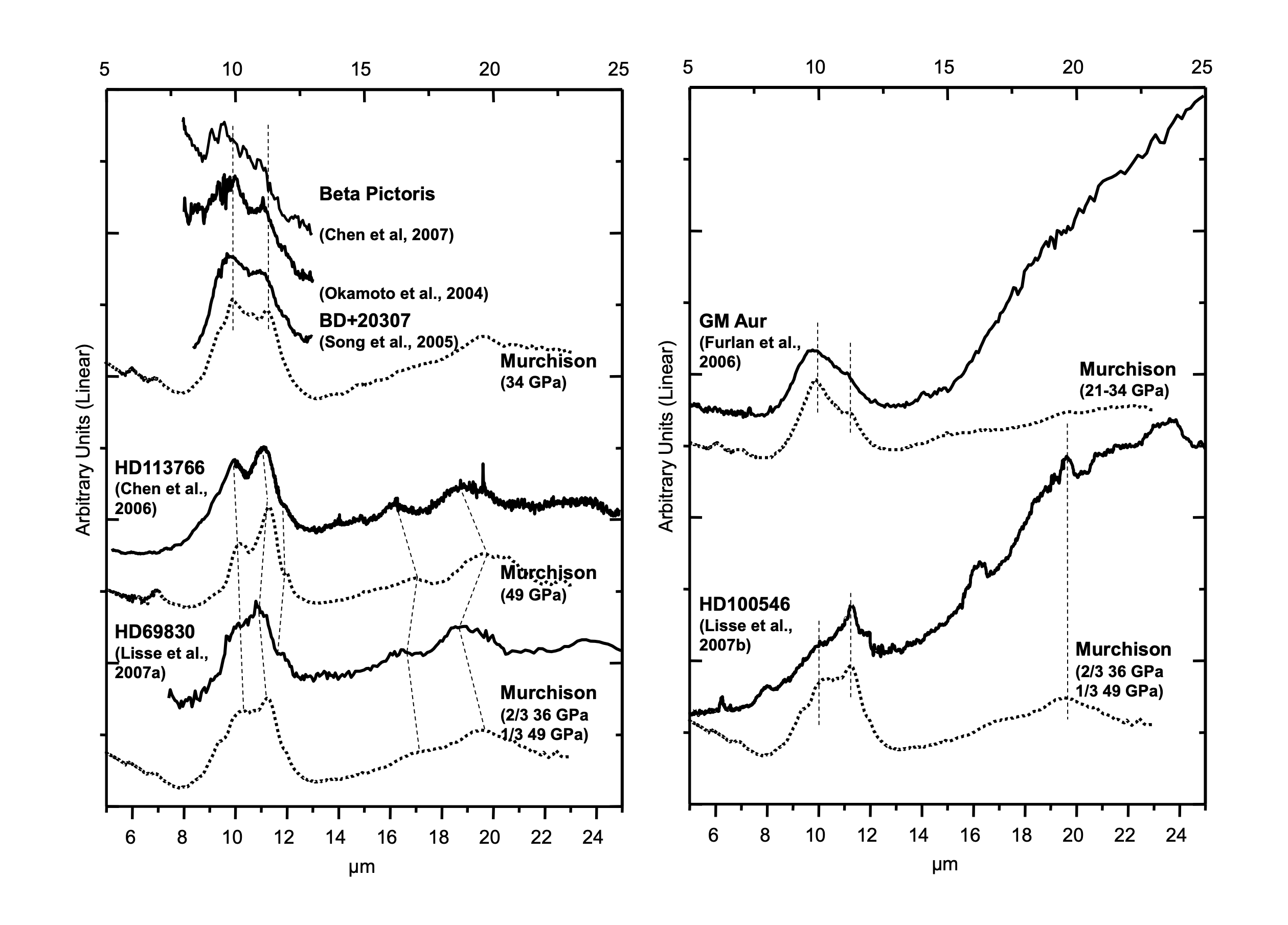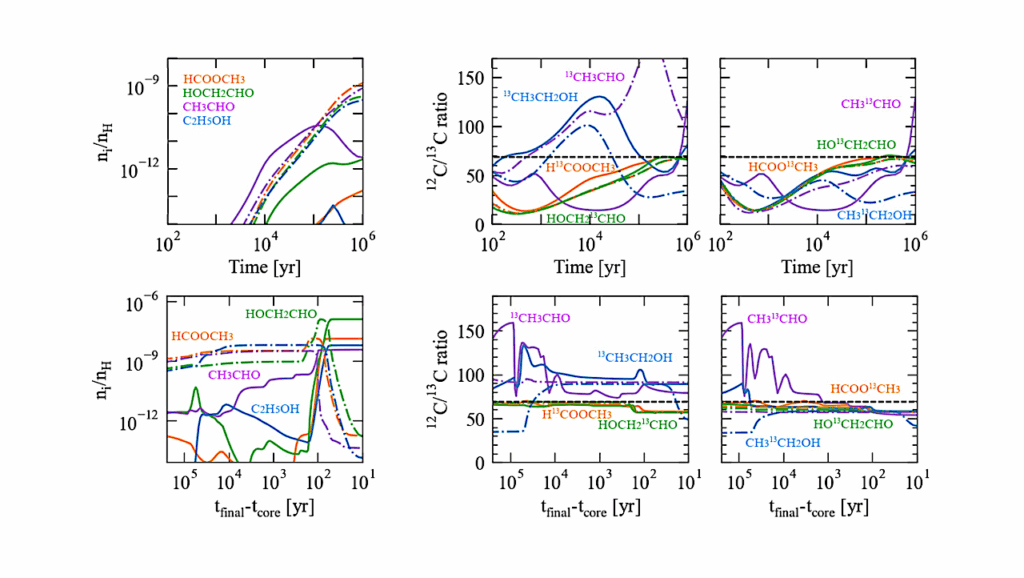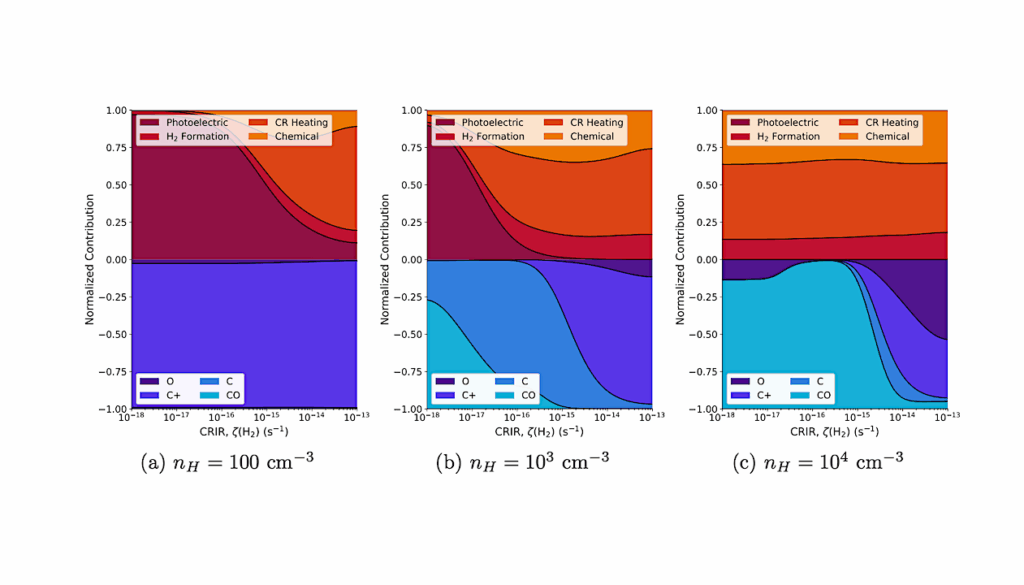Mid-infrared Spectra Of The Shocked Murchison CM Chondrite: Comparison With Astronomical Observations Of Dust In Debris Disks

We present laboratory mid-infrared transmission/absorption spectra obtained from matrix of the hydrated Murchison CM meteorite experimentally shocked at peak pressures of 10 to 49 GPa, and compare them to astronomical observations of circumstellar dust in different stages of the formation of planetary systems.
The laboratory spectra of the Murchison samples exhibit characteristic changes in the infrared features. A weakly shocked sample (shocked at 10 GPa) shows almost no changes from the unshocked sample dominated by hydrous silicate (serpentine). Moderately shocked samples (21 to 34 GPa) have typical serpentine features gradually replaced by bands of amorphous material and olivine with increasing shock pressure.
A strongly shocked sample (36 GPa) shows major changes due to decomposition of the serpentine and due to devolatilization. A shock melted sample (49 GPa) shows features of olivine recrystallized from melted material. The spectra of highly shocked Murchison samples (36 and 49 GPa) are similar to those of dust in the debris disks of HD113766 and HD69830, and the transitional disk of HD100546. The moderately shocked samples (21 to 34 GPa) exhibit spectra similar to those of dust in the debris disks of Beta Pictoris and BD+20307, and the transitional disk of GM Aur.
An average of the spectra of all Murchison samples (0 to 49 GPa) has a similarity to the spectrum of the older protoplanetary disk of SU Auriga. In the gas-rich transitional and protoplanetary disks, the abundances of amorphous silicates and gases have widely been considered to be a primary property.
However, our study suggests that impact processing may play a significant role in generating secondary amorphous silicates and gases in those disks. Infrared spectra of the shocked Murchison samples are also suggesting that the comets also contain shocked Murchison-like material.
A. Morlok, C. Koike, N. Tomioka, I. Mann, K. Tomoeka
Subjects: Earth and Planetary Astrophysics (astro-ph.EP); Solar and Stellar Astrophysics (astro-ph.SR)
Cite as: arXiv:2212.14248 [astro-ph.EP] (or arXiv:2212.14248v1 [astro-ph.EP] for this version)
Journal reference: Icarus (2010), Volume 207, Issue 1, p. 45-53
Related DOI:
https://doi.org/10.1016/j.icarus.2009.11.018
Focus to learn more
Submission history
From: Andreas Morlok
[v1] Thu, 29 Dec 2022 10:07:56 UTC (969 KB)
https://arxiv.org/abs/2212.14248
Astrobiology, Astrochemistry,








